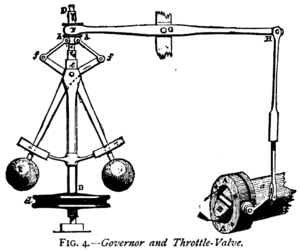Negative feedback facts for kids
Negative feedback is a basic concept of cybernetics; it is the basis of regulation and control. It is important in engineering and physiology. In biology and physiology negative feedback is known as homeostasis.
Negative feedback occurs when the output of a system acts to oppose changes to the input of a system. This has the result that the changes are made less, and the system kept within limits. The classic example is a central heating system which cuts off when a (suitably placed) temperature sensor hits a pre-set mark. The negative feedback part is the thermostat.
Homeostasis
Virtually all aspect of living systems involve homeostasis, and disease follows when any of these systems fail. Examples: blood pressure, glucose level, liver functions, cell division, and so on.
Homeostasis was defined by Claude Bernard and later by Walter Bradford Cannon in 1926, 1929 and 1932 is the property of a system, either open or closed, that regulates its internal environment and tends to maintain a stable, constant condition. The concept came from that of milieu interieur which was created by Claude Bernard and published in 1865.
If the overall feedback of the system is negative, then the system will tend to be stable.
Images for kids
-
Blood glucose levels are maintained at a constant level in the body by a negative feedback mechanism. When the blood glucose level is too high, the pancreas secretes insulin and when the level is too low, the pancreas then secretes glucagon. The flat line shown represents the homeostatic set point. The sinusoidal line represents the blood glucose level.
See also
 In Spanish: Realimentación negativa para niños
In Spanish: Realimentación negativa para niños






